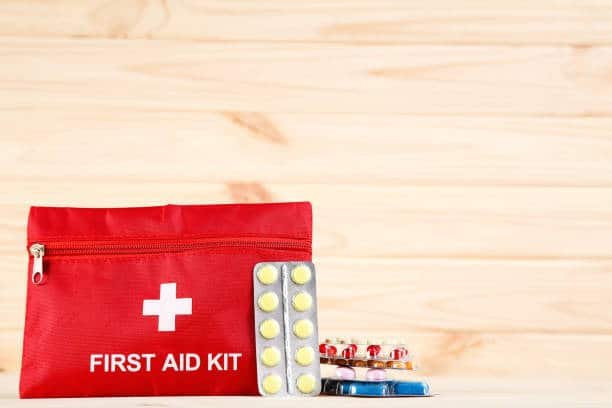Table of Contents
ToggleMedical Emergency Kit Having a well-stocked medical emergency kit is essential for preparedness in various situations, whether at home, during outdoor activities, or traveling. An emergency kit can make a significant difference in response time and can even save lives when injuries or medical emergencies occur. This article outlines the top must-haves for a comprehensive medical emergency kit, ensuring you are ready to address common health issues and emergencies effectively.
Why You Need a Medical Emergency Kit
An emergency kit is not just a collection of supplies; it is a critical resource that can provide immediate care during accidents, injuries, or sudden health issues. The benefits of having a well-prepared medical kit include:
- Immediate Response: Quick access to medical supplies can help stabilize a person’s condition before professional help arrives.
- Preparedness for Natural Disasters: Emergencies such as earthquakes, floods, or hurricanes can disrupt access to healthcare facilities, making it vital to have supplies on hand.
- Travel Safety: When traveling, particularly to remote locations, having a medical kit ensures you can address injuries or illnesses that may arise.
Essential Items to Include in Your Medical Emergency Kit

Here’s a detailed list of must-have items that should be included in your medical emergency kit:
Also Read : Cyber Insurance: Protecting Your Business In The Digital Age
1. First Aid Supplies
- Adhesive Bandages: Various sizes for small cuts and abrasions.
- Gauze Pads and Adhesive Tape: For larger wounds that require more coverage and support.
- Antiseptic Wipes: To clean wounds and prevent infection.
- Antibiotic Ointment: For application on minor cuts and scrapes.
- Sterile Gloves: To protect yourself and others while administering care.
- Scissors: For cutting tape, gauze, or clothing if necessary.
- Tweezers: For removing splinters or ticks.
Also Read : The Role Of Insurance In Financial Security
2. Emergency Medications

- Aspirin: Can help relieve pain or reduce the risk of heart attack in certain situations.
- Antihistamines: For allergic reactions or hay fever.
- Pain Relievers: Such as ibuprofen or acetaminophen for pain and fever relief.
- Antacids: For relief from indigestion or heartburn.
- Emergency Prescription Medications: Include any personal medications needed for chronic conditions (e.g., inhalers for asthma).
Also Read : Freelancing Tips For Managing Client Relationships Successfully
3. Life-Saving Tools
- CPR Face Shield: For performing CPR safely and effectively.
- Automated External Defibrillator (AED): If available, an AED can be a lifesaving tool for someone experiencing cardiac arrest.
- Tourniquet: Useful for controlling severe bleeding.
- Instant Cold Packs: For reducing swelling and pain from injuries.
- Thermometer: For monitoring body temperature.
4. Wound Care and Burn Treatment
Also Read : Insurance Innovations: How Technology Is Transforming Coverage
- Burn Dressings: Specifically designed for treating burns.
- Hydrogel or Burn Cream: To soothe and protect burned skin.
- Elastic Bandages: For wrapping sprains or strains.
5. Emergency Contact Information
- List of Emergency Contacts: Include family members, friends, and your healthcare provider.
- Medical Information: A summary of medical conditions, allergies, and current medications for all family members.
6. Tools and Accessories

- Flashlight with Extra Batteries: For visibility during emergencies, especially in low-light situations.
- Multi-Tool or Swiss Army Knife: For various tasks in an emergency situation.
- Emergency Blanket: Compact and useful for retaining body heat.
Also Read : Freelancing Skills: How To Build A Competitive Portfolio
7. Additional Supplies
- Safety Pins: For securing bandages or clothing.
- Duct Tape: Can be used for various repairs, including holding dressings in place.
- Plastic Bags: For disposal of medical waste or contaminated materials.
- Notepad and Pen: To record vital information, such as symptoms or events leading to the emergency.
How to Organize Your Medical Emergency Kit
To ensure your medical emergency kit is effective, organization is key. Here are some tips for organizing your kit:
- Use a Waterproof Container: Choose a durable, waterproof bag or container to keep supplies safe from moisture.
- Label Compartments: Clearly label sections of your kit for easy identification of supplies.
- Regularly Check Expiry Dates: Periodically review your kit to replace expired medications and supplies.
- Customize Your Kit: Tailor your kit based on personal health needs, family members’ medical conditions, and activities (e.g., outdoor adventures).
Also Read : Medical Coding Jobs: Opportunities And Guidelines
Conclusion
A well-prepared medical emergency kit is an invaluable resource that can make a difference in critical situations. By including essential first aid supplies, life-saving tools, and personal medications, you can ensure that you are ready to respond to emergencies effectively. Regularly updating and organizing your kit will help you remain prepared, whether at home, on the road, or in the great outdoors.
FAQs
Q. What is the purpose of a medical emergency kit?
A medical emergency kit is designed to provide immediate care during accidents or medical emergencies, ensuring quick access to essential supplies and tools.
Q. How often should I check my medical emergency kit?
It’s advisable to check your kit every six months to replace expired items, refresh medications, and ensure everything is in good condition.
Q. Can I customize my emergency kit?
Yes, you should customize your kit based on personal health needs, family members’ medical conditions, and specific activities you engage in.
Q. Where should I keep my medical emergency kit?
Store your kit in a cool, dry place that is easily accessible, such as a kitchen cabinet, closet, or car trunk.
Q. Is it necessary to have a CPR face shield in my kit?
While not mandatory, a CPR face shield can be very useful for performing CPR safely and effectively, especially in emergency situations.




